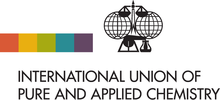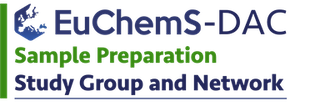Description
A new IUPAC project (Project No.: 2021-015-2-500) was approved on the 1st September 2021. All Task Group Chairs and Members are Members of the EuChemS-DAC Sample Preparation Study Group and Network.
The title of this new project is: GREENNESS OF OFFICIAL STANDARD SAMPLE PREPARATION METHODS
Analytical methodologies are essential for evaluating the impact of chemical activities. At the same time, they can contribute to further environmental problems mainly due to the use and generation of hazardous substances during all steps of analysis, as well as some less obvious indirect impacts resulting, for example, from the consumption of energy during use. Sample preparation is a critical step in analysis where samples are converted into a form/concentration compatible with the analytical instrumentation to be used. More importantly, it is the step of the analytical process where greenness-related issues can play an important role. Although research in the area of green and sustainable sample preparation has been outstandingly successful, it was not effective enough to have its advances taken up by international standardization associations. This resulted in official analytical methods still relying on environmentally unfriendly sample preparation procedures, not in line with the present trends. Moreover, private and industrial laboratories consider sustainable or more eco-friendly sample preparation methods as an extra burden rather than an opportunity for effective management and efficient, cost-effective, and socially responsible, practice. As a first step to address this problem, this project will create an inventory of sample preparation official standard methods (e.g. ISO, CEN, US EPA, AOAC, IFRA, ASTM, and Pharmacopoeia) currently in use for the analysis of legislated chemicals in environmental, agricultural, food and drug samples. A new tool for evaluating the greenness of sample preparation will be developed and standard methods will be evaluated for their greenness. Based on the results green alternatives will be proposed, yielding similar or better method performances. To maximize input and impact, task group members span from academia, IUPAC/Analytical Chemistry Division, EuChemS/Division of Analytical Chemistry, private companies, and national standard bodies. The application of environmentally benign analytical methods is the most appropriate way for pollution abatement.
The impact of this is expected to be large as greening of analytical methods is one of the social responsibilities of the analysts and the aims of this project are in alignment with the Sustainable Development Goals (SDGs) of the 2030 Agenda for Sustainable Development.

Task Group Chairs
- Zoltán Mester
- Elefteria Psillakis
- Marcela Segundo
Members
- Miguel Ángel Aguirre Pastor
- Fabio Augusto
- Juan Luis Benedé
- Carlo Bicchi
- Cecilia Cagliero
- María Celeiro Montero
- Alberto Chisvert
- Frank David
- Zhi-Yuan Gu
- Mehmet Gumustas
- Fragoulis D. Krokos
- Maria Llompart
- Emirhan Nehmutlu
- Gangfeng Ouyang
- Sibel A. Ozkan
- Stig Pedersen-Bjergaard
- Francisco Pena-Pereira
- Christophe Pérès
- Marek Tobiszewski
Objectives
1. Evaluate the current status of greenness of the sample preparation methods used in official standard methods;
2. Provide metric tools to assess the greenness of sample preparation methods;
3. Proposing events and publications for up-to-date discussion related to the official standard methods based on their greenness degree;
4. Develop a roadmap for greener alternative analytical methods, emphasizing in sample preparation;
5. Contribute to the permanent establishment of a network of specialists as well as interested representatives and institutions involved in this topic to promote a common understanding of greenness degree;
6. Linking universities, industries, and governmental/non-governmental sectors to better approach relevant themes and contents in the topic.

